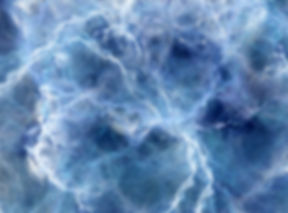
March 16th, 2024
Whale & Dolphin Advocacy Group
Announces 2 types of Sea Pens/Floating enclosures now available.
In conjunction with the leading designer and supplier of floating HDPE and netting solutions, Whale and Dolphin Advocacy Group announces we now have plans and designs for a cetacean “Sea Pen” with the capability of housing multiple cetaceans. A single enclosure can accommodate four full grown Orcas within a fully functional open water habitat. Plan packages include design, engineering, material, and manufacturing with itemized costing. Material costs include HDPE pipe, netting, anchoring systems, design, buoys, line, fencing, medical lifts, slide outs, maintenance, net cleaning equipment, and other systems necessary to protect the health and safety of animals and staff. The floating sea pen solution has arrived!
Designs are customizable and modular to meet the needs of any type of Cetacean. For example: Slight alterations to accommodate Beluga whales, false killer whales, dolphins (of all types), and even Pinnipeds. We are currently working on designs for rehabilitation facilities for all types of marine mammals should they need to be rescued or involved in a stranding or oil spill situation.
We stand ready to work with all groups and their professional staff including Veterinarians, managers, and trainers, involved in the pursuit of reintroduction of Cetaceans to their natural environment and habitat. These groups will need to be legitimate non-profit organizations with proper credentials, experience, and prove financial ability and/or prove plans to fund this undertaking. An NDA (Non-Disclosure Agreement) will be required.
Having the ability to know the costs involved, plans and engineering already developed, materials sourced and an experienced staff to oversee the build-out and deployment is critical to a successful venture. We offer basically a “turn-key solution” to supply all necessary materials and expertise to build and deploy the specific sea pen or floating sanctuary necessary.
We also offer the ability to source a specific site the “Group” may have in mind or do site evaluation and/or oversee the necessary tests mandated by the Government.
The delays we’ve all seen in the past can be greatly reduced. Having said that, this is still a very complicated and expensive venture, not to be taken lightly. Identifying the necessary items above can only help in moving this forward in the most streamlined and professional way.
Please pass this along.
Jim Styers
Whale & Dolphin Advocacy Group
Are Sea-pens the answer?
We all believe that Sanctuaries are the future for Whales & Dolphins currently housed in cement tanks and other unsatisfactory facilities. Sanctuaries will offer a large and suitable solution for long-term holding until these animals eventually pass away. At least they will have spent the remainder of their lives in a more environmentally friendly and sensitive area to their native surroundings.
HOWEVER, these Sanctuaries are fraught with design and logistics issues. Finding locations are difficult at best, and very few and far between. It takes a concerted effort to locate the perfect spot, negotiate the land portion, fund the built out and sustainability of this effort. Time and funding are the main drawbacks. There are Whales and Dolphins that need help now, not three to 5 years from now.
Enter the concept of housing these animals in Sea-pens UNTIL the Sanctuaries are constructed. They are “relatively” cheap to build, offer natural sea/ocean water, are protective and would be an obvious step towards acclimating them to this new natural environment. If designed correctly, they can be somewhat mobile, transportable, multi species designed, and used for many purposes after the Sanctuary is complete, such as: isolation pens, medical pens, separations pens, rehabilitation, and even storm pens if warranted.
Keiko was a prime example of the possibilities. We designed this pen and had it constructed in Washington State. It was transported in pieces to Iceland where it was re-assembled and deployed to its location. We can create designs for different species, locations, environment, water conditions, weather, and tidal issues.
We still believe Sanctuaries should be seen as “the end result.” However, sea pens could be used to move up the timeline considerably to house animals in dire need of assistance. This could be the “first step” in the planning of any marine sanctuary.
The technology already exists. Materials are easily sourced. The pen can be designed and constructed concurrently with finding the location site. Permits and logistics are easier than the Sanctuary.
Although many more considerations need to be addressed, it’s a “stop gap” that can be implemented very quickly.

